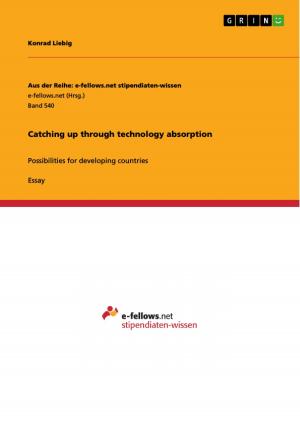| Author: | Ping Liu | ISBN: | 9783638063722 |
| Publisher: | GRIN Verlag | Publication: | June 17, 2008 |
| Imprint: | GRIN Verlag | Language: | English |
| Author: | Ping Liu |
| ISBN: | 9783638063722 |
| Publisher: | GRIN Verlag |
| Publication: | June 17, 2008 |
| Imprint: | GRIN Verlag |
| Language: | English |
Seminar paper from the year 2006 in the subject English Language and Literature Studies - Linguistics, grade: 2.3, University of Stuttgart (Institut für Linguistik), 40 entries in the bibliography, language: English, abstract: The aim of this paper is to provide a complete overview over the phenomenon of code-switching and code-mixing. The history of the research of code change has undergone various periods that have shown how complex the phenomenon of codeswitching and code-mixing are. In the course of research of code change it has become clear that code-switching and code-mixing can be investigated from different perspectives. Researchers focused on code change after they had realized that linguistic forms and practices are interrelated. And code-switching/-mixing, in their turn, embodies not only variation, but the link between linguistic form and language use as social practice. Research from a linguistic and psycholinguistic perspective has focused on understanding the nature of the systematic of code change, as a way of revealing linguistic and potentially cognitive processes. Research on the psychological and social dimensions of code-switching/-mixing has largely been devoted to answering the questions of why speakers code change and what the social meaning of code change is for them. The sociological perspective later goes on to attempt to use the answer to those questions to illuminate how language operates as a social process. Throughout the history of research on code-switching/-mixing it has been proposed that it is necessary to link all these forms of analysis and that, indeed, it is that possibility that is one of the most compelling reasons for studying code-switching/- mixing, since such a link would permit the development and verification of hypotheses regarding the relationship among linguistic, cognitive and social processes in a more general way (Heller, Pfaff 1996). As with any aspect of language contact phenomena, research on code- switching and code- mixing are firstly plagued by the issue of terminological confusion. In communications, a code is a rule for converting a piece of information (for example, a letter, word, or phrase) into another form or representation, not necessarily of the same sort. In communications and information processing, encoding is the process by which a source (object) performs this conversion of information into data, which is then sent to a receiver (observer), such as a data processing system (en.wikipedia.org/wiki/Code) . . . In semiotics, the concept of a code is of fundamental importance. Saussure emphasized that signs only acquire meaning and value when they are interpreted in relation to each other.
Seminar paper from the year 2006 in the subject English Language and Literature Studies - Linguistics, grade: 2.3, University of Stuttgart (Institut für Linguistik), 40 entries in the bibliography, language: English, abstract: The aim of this paper is to provide a complete overview over the phenomenon of code-switching and code-mixing. The history of the research of code change has undergone various periods that have shown how complex the phenomenon of codeswitching and code-mixing are. In the course of research of code change it has become clear that code-switching and code-mixing can be investigated from different perspectives. Researchers focused on code change after they had realized that linguistic forms and practices are interrelated. And code-switching/-mixing, in their turn, embodies not only variation, but the link between linguistic form and language use as social practice. Research from a linguistic and psycholinguistic perspective has focused on understanding the nature of the systematic of code change, as a way of revealing linguistic and potentially cognitive processes. Research on the psychological and social dimensions of code-switching/-mixing has largely been devoted to answering the questions of why speakers code change and what the social meaning of code change is for them. The sociological perspective later goes on to attempt to use the answer to those questions to illuminate how language operates as a social process. Throughout the history of research on code-switching/-mixing it has been proposed that it is necessary to link all these forms of analysis and that, indeed, it is that possibility that is one of the most compelling reasons for studying code-switching/- mixing, since such a link would permit the development and verification of hypotheses regarding the relationship among linguistic, cognitive and social processes in a more general way (Heller, Pfaff 1996). As with any aspect of language contact phenomena, research on code- switching and code- mixing are firstly plagued by the issue of terminological confusion. In communications, a code is a rule for converting a piece of information (for example, a letter, word, or phrase) into another form or representation, not necessarily of the same sort. In communications and information processing, encoding is the process by which a source (object) performs this conversion of information into data, which is then sent to a receiver (observer), such as a data processing system (en.wikipedia.org/wiki/Code) . . . In semiotics, the concept of a code is of fundamental importance. Saussure emphasized that signs only acquire meaning and value when they are interpreted in relation to each other.















